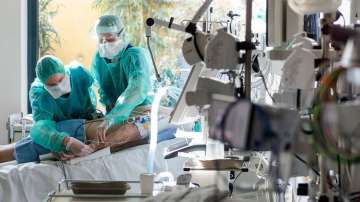NASA engineers have designed a new low-cost high-pressure ventilator tailored specifically to treat COVID-19 patients. The device, called VITAL (Ventilator Intervention Technology Accessible Locally), passed a critical test on April 21 at the Icahn School of Medicine at Mount Sinai in New York -- an epicentre of COVID-19 in the United States, NASA said on Thursday. The device now is under review for an emergency use authorization by the US Food and Drug Administration (FDA), the US space agency said.
VITAL is designed to treat patients with milder symptoms, thereby keeping the nation's limited supply of traditional ventilators available for patients with more severe COVID-19 symptoms.
The device can be built faster and maintained more easily than a traditional ventilator, and comprises far fewer parts, making it more economical to produce, NASA said.
Developed by engineers at NASA's Jet Propulsion Laboratory (JPL) in Southern California, the device was designed to use parts currently available to potential manufacturers but not compete with the existing supply chain of currently made ventilators.
"We specialise in spacecraft, not medical-device manufacturing," said JPL Director Michael Watkins.
"But excellent engineering, rigorous testing and rapid prototyping are some of our specialties. When people at JPL realised they might have what it takes to support the medical community and the broader community, they felt it was their duty to share their ingenuity, expertise and drive," Watkins said.
Like all ventilators, VITAL requires patients to be sedated and an oxygen tube inserted into their airway to breathe.
The new device wouldn't replace current hospital ventilators, which can last years and are built to address a broader range of medical issues.
Instead, VITAL is intended to last three to four months and is specifically tailored for COVID-19 patients.
"Intensive care units are seeing COVID-19 patients who require highly dynamic ventilators," said J.D. Polk, NASA's Chief Health and Medical Officer.
"The intention with VITAL is to decrease the likelihood patients will get to that advanced stage of the disease and require more advanced ventilator assistance."
(With IANS inputs)
Also Read | Air pollution over North India plummets to 20-year-low, says NASA
Also Read | NASA steps in to help develop COVID-19 solutions

